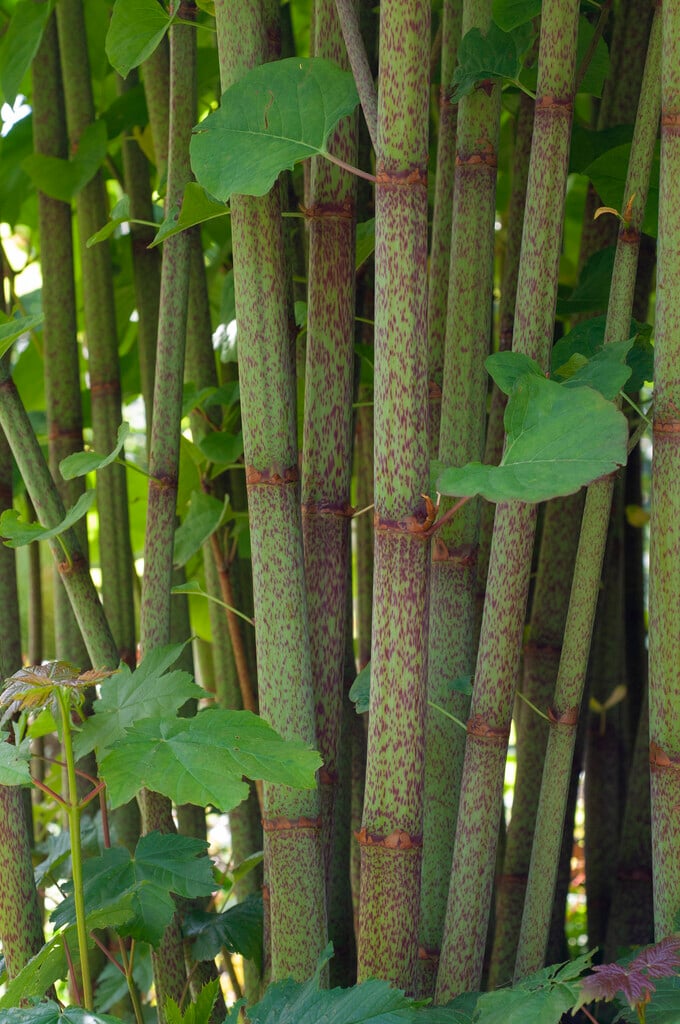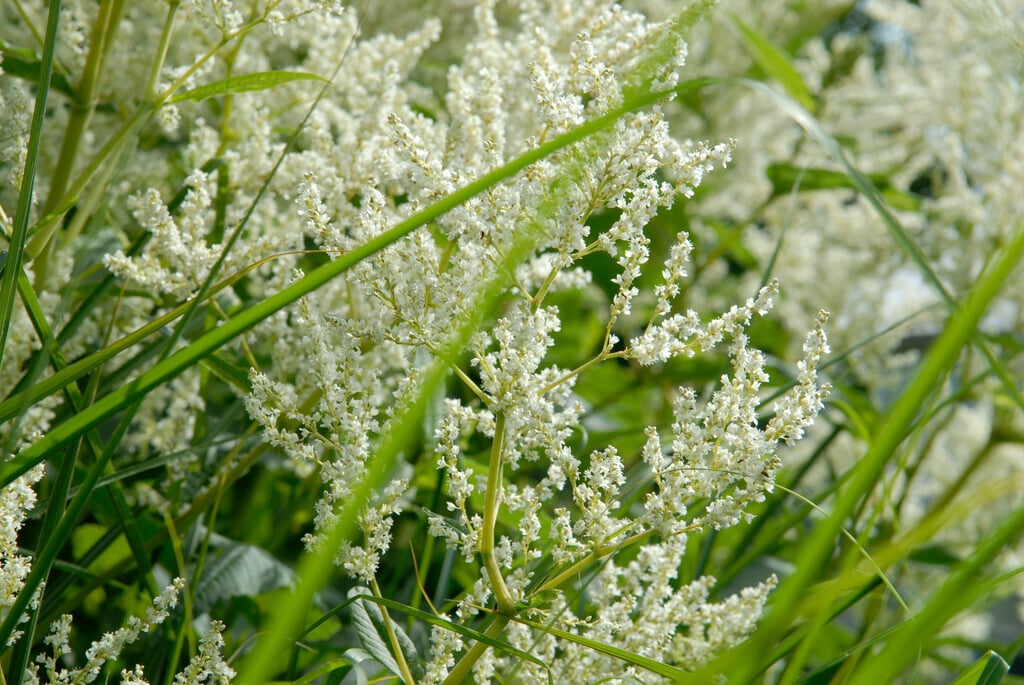Reynoutria japonica
giant knotweed
A tall, vigorous herbaceous perennial to 2.1m high, with cane-like stems flecked with purple, and shovel-shaped leaves borne alternately (in a zig-zag pattern) along the stems. Produces tassels of white flowers in late summer and early autumn. This plant is considered invasive, and legal requirements apply to its control
Other common names
Japanese knotweedSize
Ultimate height
1.5–2.5 metresTime to ultimate height
1 yearUltimate spread
2.5–4 metresGrowing conditions
Moisture
Moist but well–drained, Well–drained, Poorly–drainedpH
Acid, Alkaline, NeutralColour & scent
| Stem | Flower | Foliage | Fruit | |
| Spring | Green | |||
|---|---|---|---|---|
| Summer | White Cream | Green | ||
| Autumn | White Cream | Green | ||
| Winter |
Position
- Full sun
- Partial shade
Aspect
East–facing or North–facing or South–facing or West–facing
Exposure
Exposed or Sheltered Hardiness
H7Botanical details
- Family
- Polygonaceae
- Native to GB / Ireland
- No
- Foliage
- Deciduous
- Habit
- Columnar upright
- Name status
Correct
How to grow
Cultivation
Japanese knotweed can grow in a wide range of situations spreading rapidly, even from small fragments, through vigorous, fast-growing rhizomes. This plant is listed on Schedule 9 of the UK Wildlife & Countryside Act as an invasive non-native species. Although not banned from sale, it is an offence to plant or cause it to grow in the wild IN ENGLAND, WALES, NORTHERN IRELAND and the REPUBLIC OF IRELAND. Gardeners possessing it should undertake measures to control it. See Japanese knotweed, and RHS advice on invasive non-native species, for further information
Propagation
Please see cultivation notes
Suggested planting locations and garden types
Pests
May be susceptible to Aphalara itadori psyllids but generally pest free
Diseases
May be susceptible to leafspot but generally disease-free
Love gardening
Sign up to receive regular gardening tips, inspiration, offers and more
View our Privacy Policy
Get involved
The Royal Horticultural Society is the UK’s leading gardening charity. We aim to enrich everyone’s life through plants, and make the UK a greener and more beautiful place.

